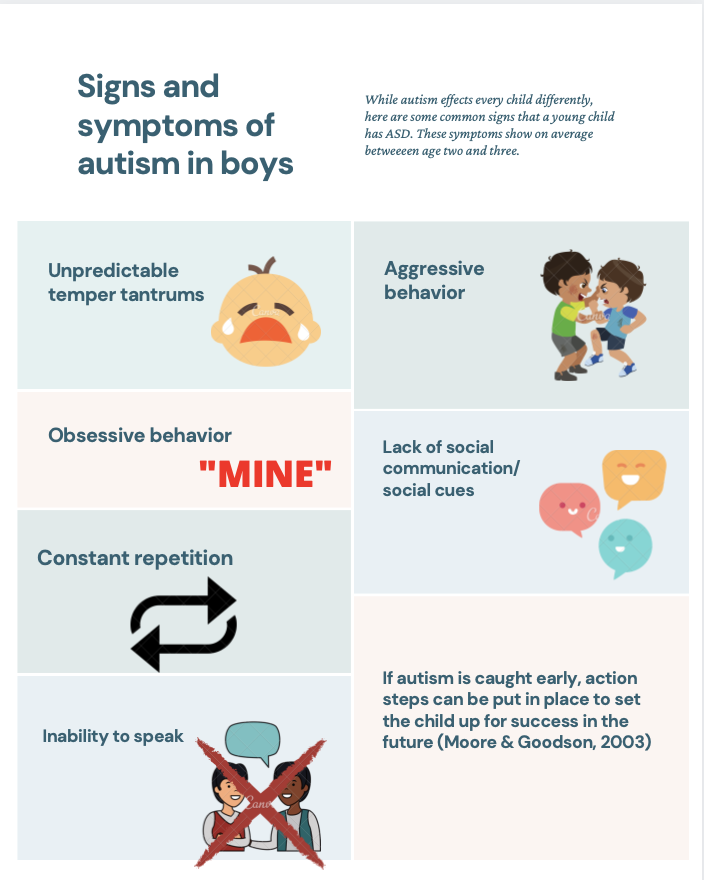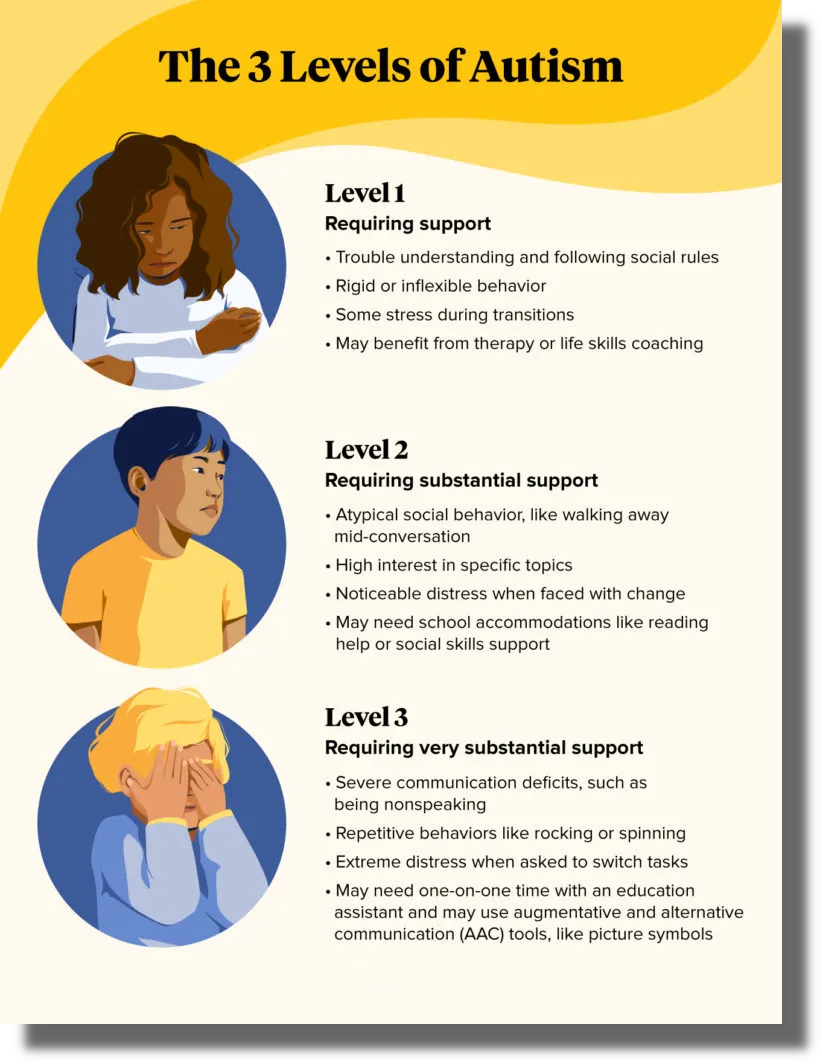Why routines matter benefit autistic individuals—according to an Autism Therapist’s advice
Why routines matter benefit autistic individuals—according to an Autism Therapist’s advice
Blog Article
Recognizing the Impact of Behavioral Autism on Day-to-day Live and Social Communications
You might not realize exactly how deeply behavior autism impacts daily life and social communications. People on the range commonly navigate a globe filled up with interaction hurdles and sensory overload. These difficulties can lead to frustration and seclusion, influencing their connections and general well-being.
Specifying Behavioral Autism and Its Characteristics
Behavioral autism, frequently referred to as autism range condition (ASD), includes a series of conditions characterized by obstacles in social interaction, communication, and recurring actions. You might observe that people with ASD usually have a hard time to translate social cues, which can result in misunderstandings in discussions. They might locate it hard to develop eye call or participate in little talk, making social scenarios feel frustrating.
Interaction difficulties can materialize in different ways, from delayed speech advancement to a choice for making use of less words. Repeated behaviors, such as hand-flapping or rocking, can serve as coping mechanisms to take care of stress or sensory overload. These features can profoundly affect life, making it vital for you to recognize and support those with ASD. By recognizing these attributes, you can cultivate an environment that advertises approval and urges efficient interaction, helping people with autism thrive in their daily communications.
The Range of Autism: Comprehending Irregularity in Actions
Autism spectrum condition (ASD) isn't a one-size-fits-all medical diagnosis; it differs commonly among individuals. You may discover that some people with ASD exhibit moderate signs, while others might face more significant obstacles. This irregularity can show up in habits, passions, and sensory level of sensitivities. You might come across people who are extremely spoken and involve easily in conversations, while others might favor singular tasks or communicate non-verbally.
Moreover, the way individuals with ASD respond to sensory input can vary significantly; some could be bewildered by loud noises or intense lights, whereas others prosper in boosting settings. The spectrum likewise consists of differences in social communications; some individuals may battle to analyze social signs, while others navigate social settings with relative convenience. Comprehending this variability is essential, as it aids you appreciate everyone's distinct experience and dressmaker assistance to their details demands, promoting a more comprehensive atmosphere for everybody.
Communication Obstacles Dealt With by People With Autism
When you connect with people on the autism range, you might discover their unique interaction challenges. They usually deal with difficulties with both spoken and nonverbal signs, which can impact their social communications. Understanding these obstacles is crucial for fostering better connections and assistance.

Verbal Interaction Difficulties
Lots of individuals on the autism range experience verbal communication problems that can substantially influence their everyday communications. You may find it testing to express your ideas, sensations, or requires clearly. This can cause irritation for both you and those around you, as misunderstandings happen. You might have problem with initiating conversations, preserving a topic, or comprehending nuances in speech. Often, you might favor using easy language or recurring expressions, which can limit your capacity to engage in much deeper discussions. Your quantity, rate, or tone may not straighten with social assumptions, causing others to misinterpret your purposes. Identifying these difficulties can assist you and your assistance network develop techniques to boost interaction and foster much better connections with others in your daily life.
Nonverbal Interaction Obstacles
Spoken communication isn't the only difficulty people on the autism range face; nonverbal communication barriers can be simply as significant. These difficulties can lead to misconceptions or false impressions of social hints, making interactions feel complicated or overwhelming. By attending to nonverbal interaction, you can find techniques to boost your social experiences and improve your overall high quality of life.
Social Communication Impacts
Social interactions can commonly feel overwhelming as a result of the distinct communication obstacles faced by people with autism. You might fight with analyzing social hints, making it difficult to understand sarcasm or body language. This can result in misconceptions or uncomfortable moments in conversations. In addition, initiating and preserving conversations might feel difficult, triggering stress and anxiety in social circumstances. You may like structured settings, making spontaneous communications uneasy. It's additionally usual to experience trouble in participating in tiny talk, which can prevent creating new friendships. Recognizing these challenges can help you discover techniques to boost interaction, such as exercising social abilities in safe settings or using aesthetic aids - Autism Spectrum Therapies. Understanding your requirements allows you to browse social interactions with better self-confidence and convenience.
Social Communication and Relationship Structure in Autism
While structure relationships can be testing for individuals with autism, recognizing their one-of-a-kind viewpoints and interaction designs can foster purposeful links. You might see that many people on the range prefer straight communication and might fight with social hints or little talk. By being straightforward in your interactions, you can aid create an environment where they really feel comfy.
Make the effort to observe and pay attention how they share themselves. This insight can direct you in steering discussions better. Engaging in shared passions can also function as get more info a bridge to much deeper connections. Whether it's a leisure activity, a favorite program, or a common passion, these typical strings can open up doors to friendship.
Life Routine: Navigating Methods and difficulties
Steering day-to-day live routines can be especially challenging for individuals with autism, specifically when unexpected changes occur. You may locate convenience in having a structured schedule, as it helps you anticipate what's following. When disruptions occur, it's typical to feel nervous or overwhelmed. To browse these difficulties, take into consideration implementing aesthetic routines or lists. These devices can provide quality and peace of mind.
Developing a routine that consists of sensory breaks can also be beneficial. You can intend brief breaks throughout your day to recharge. It's necessary to connect with those around you, letting them recognize your choices and requirements. This assists produce an understanding atmosphere.
Lastly, practice mindfulness methods to take care of stress and anxiety and anxiety. Simple breathing exercises or basing methods can make a substantial difference. By including these strategies, you can enhance your daily routine and minimize interruptions, making life really feel much more convenient.
Toughness and Abilities of People on the Autism Range
Understanding day-to-day life routines is just one facet of the autism experience. Lots of individuals on the autism range have amazing strengths and capabilities that set them apart.
Additionally, your memory abilities commonly shine, particularly in areas of rate of interest. Aba Therapist. This knack for keeping info can make you a beneficial source in areas like art, innovation, or science. You may additionally exhibit strong visual reasoning, allowing you to imagine intricate ideas and fix troubles creatively
Additionally, your one-of-a-kind viewpoint on the world can cultivate empathy and understanding in others, enhancing social communications. Accepting these staminas not only boosts your self-confidence but additionally assists others value the varied talents you give the table.
Developing Inclusive Environments for Individuals With Autism
Creating comprehensive settings for individuals with autism starts with developing sensory-friendly areas that provide to their one-of-a-kind requirements. You can likewise foster possibilities for social interaction, assisting to construct relationships and links. By making these adjustments, you'll add to an extra inviting ambience for everyone.
Creating Sensory-Friendly Spaces
While designing sensory-friendly spaces, it's essential to reflect on the special requirements of individuals with autism. Incorporate quiet zones where people can recharge and retreat when bewildered. Include aesthetic schedules or clear signs to aid individuals browse the room confidently.
Promoting Social Interaction Opportunities
Creating sensory-friendly areas not just addresses specific convenience but also establishes the stage for significant social communications among individuals with autism. Encourage peer mentoring, matching people with autism with supportive peers who can lead them through social circumstances. By applying these strategies, you can boost social opportunities, assisting people with autism construct relationships and strengthen their social skills in a safe, welcoming setting.

Frequently Asked Concerns
Just How Can Buddies Assistance Somebody With Behavioral Autism?
You can support a friend with behavior autism by being client, listening proactively, and respecting their boundaries. Engage in tasks they appreciate, interact freely, and develop a comfortable atmosphere where they really feel valued and recognized.
What Resources Are Offered for Moms And Dads of Children With Autism?
You can check out various resources for moms and dads of kids with autism, including support groups, academic sites, and local community services. Getting in touch with other moms and dads can additionally provide beneficial understandings and shared experiences to assist browse difficulties.
Can Behavioral Autism Adjustment With Time?

Yes, behavioral autism can transform gradually. You might observe changes in interaction, social abilities, and habits as your youngster grows. Early treatment and support frequently play here essential duties in these developmental changes.
How Do Sensory Sensitivities Affect Every Day Life?
Sensory level of sensitivities can make day-to-day experiences frustrating. You may struggle with intense lights or check here loud noises, bring about anxiety or avoidance. Finding settings that accommodate your needs can greatly enhance your convenience and overall daily life.
What Are Usual Misconceptions Concerning Behavioral Autism?
You might believe behavior autism only impacts interaction skills, yet it's more complex. Several assume people lack empathy or knowledge, which isn't real. Recognizing these false impressions assists foster acceptance and assistance for those on the range.
Behavioral autism, typically referred to as autism spectrum condition (ASD), incorporates an array of conditions identified by difficulties in social interaction, communication, and recurring behaviors.Social communications can commonly feel frustrating due to the one-of-a-kind communication challenges faced by people with autism.Designing sensory-friendly rooms not only addresses private convenience however additionally sets the phase for meaningful social interactions amongst people with autism. Encourage peer mentoring, pairing people with autism with supportive peers who can direct them with social situations. By executing these approaches, you can enhance social possibilities, assisting people with autism construct friendships and reinforce their social skills in a safe, inviting environment.
Report this page